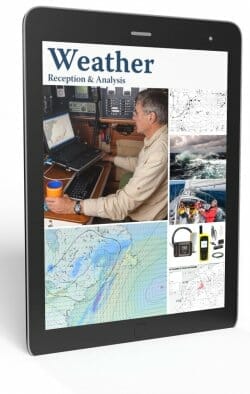
I have repeatedly recommended looking at forecaster-generated weather maps, as well as GRIBs, to get an overall understanding of how weather systems, and particularly fronts, which are not drawn on GRIBs, are developing.
But wait, lately some of the GRIB-viewing tools have added AI-generated fronts. So can we now not bother to go through the hassle of downloading weather maps?
Two pictures are worth a thousand words:
The one at the top of the post was AI generated.
Now let’s look at the real thing from the same time:

A quick glance shows that the AI version misses a huge amount of vital information that’s on the human-generated map. At least nine—count ’em, you may find more—developing gales, as well as a bunch of fronts, are shown on the real map that are missed on the AI-generated fake.
I could go on for a couple of thousand words on how much better the real thing is, but do I really need to beat that dead horse when one glance shows the clear superiority of the real thing?
That said, the most important advantage of the human-generated map is that it shows where lows are developing on the fronts, as well as the type of front: warm, cold, or occluded.
And if we don’t understand that last paragraph, we need to learn more about weather basics before we take a yacht to sea…and regularly looking at weather maps is the best way to do that…as well as reading this:


Why did you display the map as pressure instead of windspeed? Most new sailors don’t give a fig about the baraometer and don’t care what it means. They do know that if they toggle the map forward in time, as designed, the developing gales all appear. Small wonder the single view appears stripped of information. To me, normal practice is to view the AI map in several forms. The information is still there, just displayed differently.
I’m not sayin’ the AI is better. It requires a much faster connection, something that is not always practical. But perhaps soon, it will be. It requires a different way of looking at things, and less high-level thought. We’re old school, I guess.
Hi Drew,
I don’t agree, sure you can step forward through wind speed and I agree that would be adequate, although barely, for the type of close to home coastal cruising you do in sheltered waters. But when we head offshore, as I did for nearly five decades, we need to actually understand the weather systems, and to do that we need to understand pressure gradients and fronts. What was really shocking to me is that particular tool did not even have a way, at least that I could find, to display isobars.